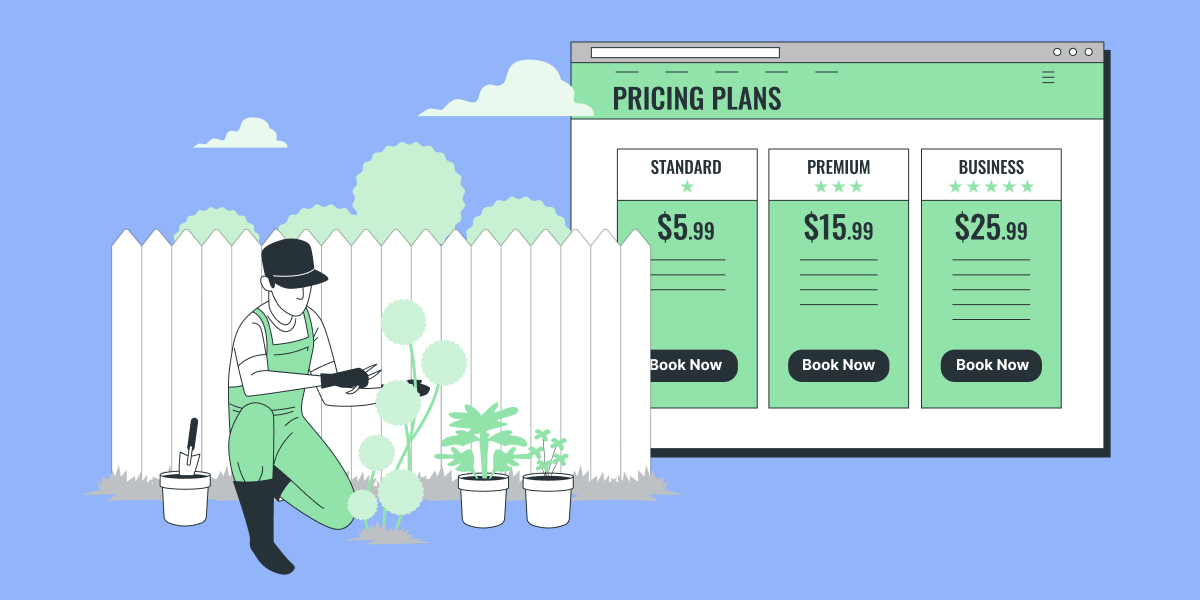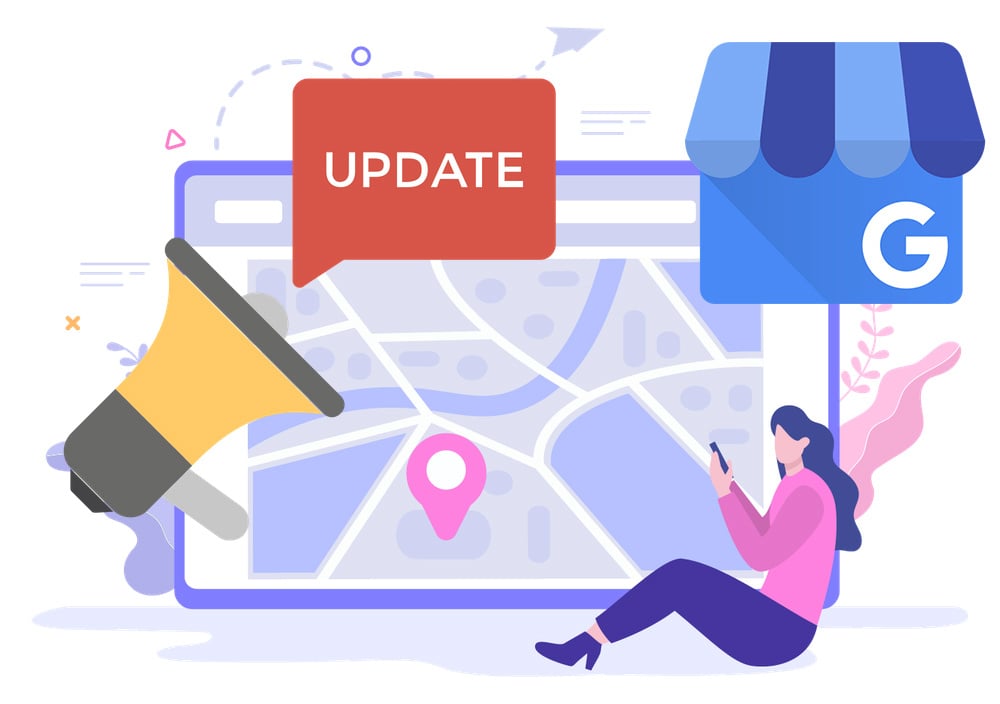How To Price Services for Your Landscaping Business
Are you thinking of starting a landscaping business but don't know what to charge your customers? Find out what to consider when pricing your services here.

Running a successful landscaping business is no easy feat. More often than not, how you determine the price for each landscaping job can make or break your bottom line. But if you get your estimates right, your investments will pay off and you’ll land more projects over time.
Jump to:
-
Why Pricing Is So Important
-
How To Price Landscaping Services
-
How Often Should You Adjust Your Pricing?
-
Price Your Services in a Way That Benefits You and Your Customers

Why Pricing Is So Important

Source: QuickBooks
As with any multi-billion dollar industry, starting a landscaping business means dealing with stiff competition. Ultimately, your pricing strategy should focus on the value that your customers will get. So begin by answering the question:
What do you offer and how does what you offer improve the overall look and value of their property?
There is no one-size-fits-all approach to pricing. If you price your services too high, your business won’t appeal to many customers. On the other hand, pricing your services too low will mean leaving money on the table. How do you find that sweet spot when it comes to landscaping pricing?
In this post, we’ll go over the different factors you need to consider when pricing your services. We’ll also talk about how you can improve your pricing strategy over time to grow your business fast and maximize your profits.
How To Price Landscaping Services
1. Assess the Time and Labor Needed for the Landscaping Project
To give accurate and fair estimates, you need to be as thorough as possible in assessing every job detail. Get in touch with your client to get a clear idea of all aspects of the landscaping project.
The prices you set for your landscaping services will usually depend on these categories:
- Materials and supply
- Labor
- Equipment
- Overhead
Scope of Work
You need to visit and survey the site to cover every job detail. The most common factors you need to consider when determining the scope of landscaping work are the following:
- The location of the job site. You’ll need to charge more for time and fuel if the site is in a remote area. You also need to look at the ease of access to the job site.
- The size of the lawn or yard. You need the exact measurements and dimensions of the site to know how much or how many materials to order.
- The condition of the site and the quality of the lawn. Is the yard well maintained? Is the lawn weedy and rocky? Are there any safety hazards? Are there previous works or obstacles that need to be removed?
- Time constraints. Does the client have a specific timeframe? You can charge more for landscaping services if the schedule is tight. You also have to consider the season in which the work will be carried out.
- Pets. Does your client want pet-friendly landscaping? Think about the elements that will make the outdoor space beautiful, safe, and enjoyable for your customers and their pets.
- Any additional lawn, garden, or irrigation features the customer needs maintained. Will the job include maintenance services? Find out the amount of time and money the customer is willing to put into maintaining the plants and hardscape.
Complexity
The client’s demands and expectations — as well as how complicated or tricky the job may be — are important factors to ponder in providing a job estimate. Find out if the client has any special requests and if you can accommodate them. You may charge more if the job site has difficult features or potential safety issues and if the job requires specialized services.
Equipment Costs
Make a list of all the types of materials and equipment you need to complete the landscaping project and then add up the cost. Some of the most common materials used in any given landscaping job include compost, cement, lawn turf, fertilizer, gravel, mulch, timber, seeds, plants, trees, floodlights, and landscaping rock.
The equipment you will use varies from job to job, but it is best to invest in tools and resources like shovels, rakes, lawnmowers, clippers, leaf blowers, protective gear, etc. You should factor in the cost to purchase, fuel, and maintain the tool when accounting for your equipment costs.
It’s also common for major yard renovations to require you to rent heavy equipment. Don’t forget to take these costs into consideration.
Ideally, you should have all the accurate measurements of the landscaping job site so you can know the precise cost and amount of materials needed.
It’s best practice to look at all your landscaping jobs at a given time so you can order in bulk. This will help you reduce costs and even offer a lower, more attractive price to other clients. Plus, you can also charge extra fees for materials that are too uncommon.
Labor Costs
Figure out if you’re going to hire generalized or specialized workers. You can choose to charge by the hour or have a fixed rate for a project. Keep in mind the following details when determining your labor costs:
- The number of people needed to complete the job.
- The number of hours it will take for the team to complete the job. Get the total labor hours by multiplying the number of hours it takes for one person to finish the job by the total number of people you have on the project.
- The average hourly wage for employees in your city or location. This will help you ensure that your landscaping prices will adequately pay for all those involved in the landscaping job.
- The markup or percentage you need to add to reflect taxes, compensation, insurance, benefits, and other employee-related expenses in the total hourly labor rate.
To get the total labor cost, multiply the total number of labor hours by the hourly labor rate.
Overhead Costs
Underestimating, and even forgetting overhead costs can quickly drain your profits. Overhead fees include any money spent to keep the landscaping business running. Generally, overhead costs include:
- Marketing and advertising costs
- Accounting costs
- Office rent
- Utilities
- Internet bills
- Equipment repair
- Legal fees
- Business insurance
- Landscape software
To get your hourly overhead costs, add up your weekly overhead costs and divide the figure by the total number of weekly labor hours.
2. Take Into Account Profit Margins and Your Break-Even Point
Understanding your break-even point and profit margins can make or break your chances of investing in your business, growing it, and keeping it profitable.
We have a FREE break-even calculator built just for landscapers. Click Here to Get Started!
The break-even point happens when your sales are exactly covering your expenses. Knowing your break-even point helps you determine the amount of revenue you need to make per landscaping project to recover all the costs you are paying out.
There are three things to look for when calculating your break-even point:
- Total fixed costs. These are the expenses that stay the same month after month.
- The baseline or average price per landscaping job. This is easy to calculate, simply divide your total sales by the number of jobs you’ve completed.
- Variable costs. These are any costs that increase as you book more business, such as gas, labor hours, etc.
To find your break-even point, use the formula below:
Total Fixed Costs / (Average Price per Job - Variable Costs per Job)
The result you get after crunching these numbers is the total amount in sales you need to pay for your business operations. Anything you sell above that sales number is profit.

Source: Plan Projections
The profit margin, on the other hand, refers to the amount of money you take home after deducting your labor, material, and overhead costs. The higher your profit margin, the more money your business retains, and the closer you are to achieving a healthy net profit for your landscaping business.
A healthy profit margin for an average landscaping business is between 15% to 45%. Ideally, a good profit margin is between 10% to 15% for commercial landscaping jobs and 15% to 20% for residential jobs.
To get your profit margin for a month, you must first subtract your total operating expenses from your total revenue. Divide the result by your overall revenue and multiply the figure by 100 to get the percentage.
([Total Operating Expenses - Total Revenue] / Total Revenue) x 100
3. Identify the Industry Standard
Knowing the national average cost of standard landscaping jobs like general maintenance, lawn mowing, trimming, and weeding will help you better gauge the cost of materials and how much you should pay for employees.
Landscaping costs vary greatly depending on the scope and scale of the job or project. The national average rate for common landscaping jobs ranges between $300 to $700. Smaller projects usually start at $50 while more large-scale and complex projects can be $7,000 or higher.
4. Compare Across Landscaping Companies in Your Area
Make sure you research how much other landscaping businesses or competitors in your area are charging. Find out the going rates in your area by checking out their business websites or reaching out to them to get a list of prices for landscaping services that you plan to offer.
By understanding local factors like climate and competition, you’ll have a better sense of what customers are expecting to pay for landscaping services. Plus, you’ll also be able to set prices that keep you competitive with local businesses.
How Often Should You Adjust Your Pricing?
As the cost of doing business increases, so should your landscaping prices. Every year, there can be massive spikes in the cost of materials. Raising your prices will help your landscape business offset expenses. Otherwise, you’ll lose profits in the long run.
But raising prices can be very tricky — if you’re not careful, you may end up losing your most valuable customers. More often than not, customers expect price increases. It’s up to you to communicate your price increases clearly and effectively and give your clients plenty of notice.
Here are some points to ponder when you want to adjust your landscaping prices:
- Profit margin. Review and recalculate your profit margin to know when you should increase prices to offset costs.
- Timing is everything. Ideally, you can raise your prices before the busy selling season or at the end of it. You can also consider increasing prices when there is a huge demand for your services and production can’t keep up, when you have higher-than-average closing rates, and when you want to charge a premium for expertise and exclusivity.
- Break-even point. Raise your prices yearly to become more profitable and competitive.
Is It Ever a Good Idea to Lower Your Prices?
As a general rule, business growth should include standard price increases. Increasing your prices helps you:
- Provide better services
- Use better equipment and supplies
- Hire better employees
- Focus on your best target audiences
- Raise your profits
But is there ever a time when you should consider lowering your prices? The answer is yes. However, these moments are more rare. Examples of times when you can (or should) lower your prices include:
- You’ve found a way to dramatically lower your costs per job.
- You’ve found a way to complete more jobs quickly and affordably.
- You find that your prices are significantly higher than everyone else in your area.
- You see an opportunity to get ahead with a limited-time offer or promotion.
Price Your Services in a Way That Benefits You and Your Customers
Getting your prices right from the start is key to landscaping success. Ultimately, you have to focus on the quality of your landscaping work. Listen to the needs and preferences of your clients and look for ways to exceed their expectations. Your customers will keep coming back when they feel valued and love your results.
%20(1)%20(1).png?width=340&name=Group%2012%20(2)%20(1)%20(1).png)



